San Sebastián, Spain
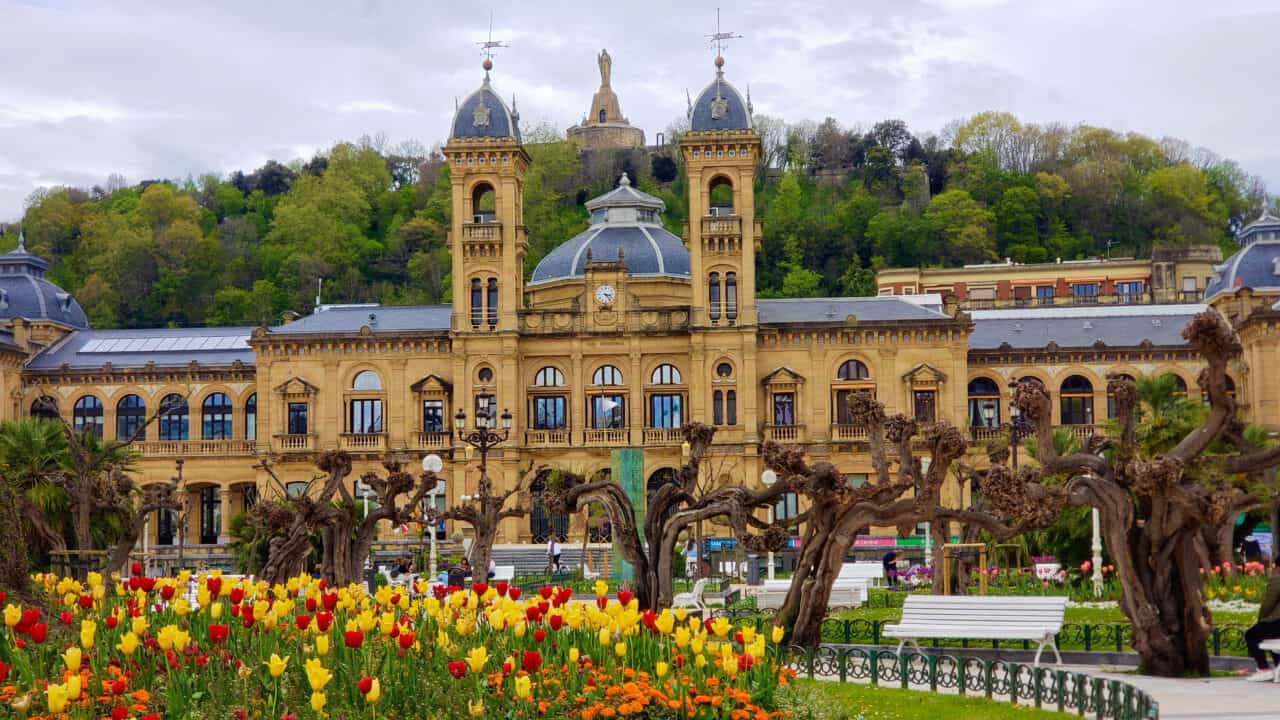
Mike and I visited San Sebastián, a major town in Spanish Basque country, by car and liked it so much we made the hour long drive a second time and were glad we did. The city was practically destroyed in 1813 by Napeoleon’s troops during the Siege of San Sebastián in the Spanish War of Independence. Set ablaze and plundered, only the most important religious buildings survived. It took more than 30 years to rebuild the city. During that time the walls were pulled down and the current layout of the Parte Vieja (Old Town) took shape.
The Basilica de Santa Maria del Coro was originally attached to the city fortification walls. The Cathedral and the Basilica are built about 1 km apart at opposing ends of one straight street. It was really interesting to stand in the middle of the street and look at the Cathedral and then turn around and view the Basilica.
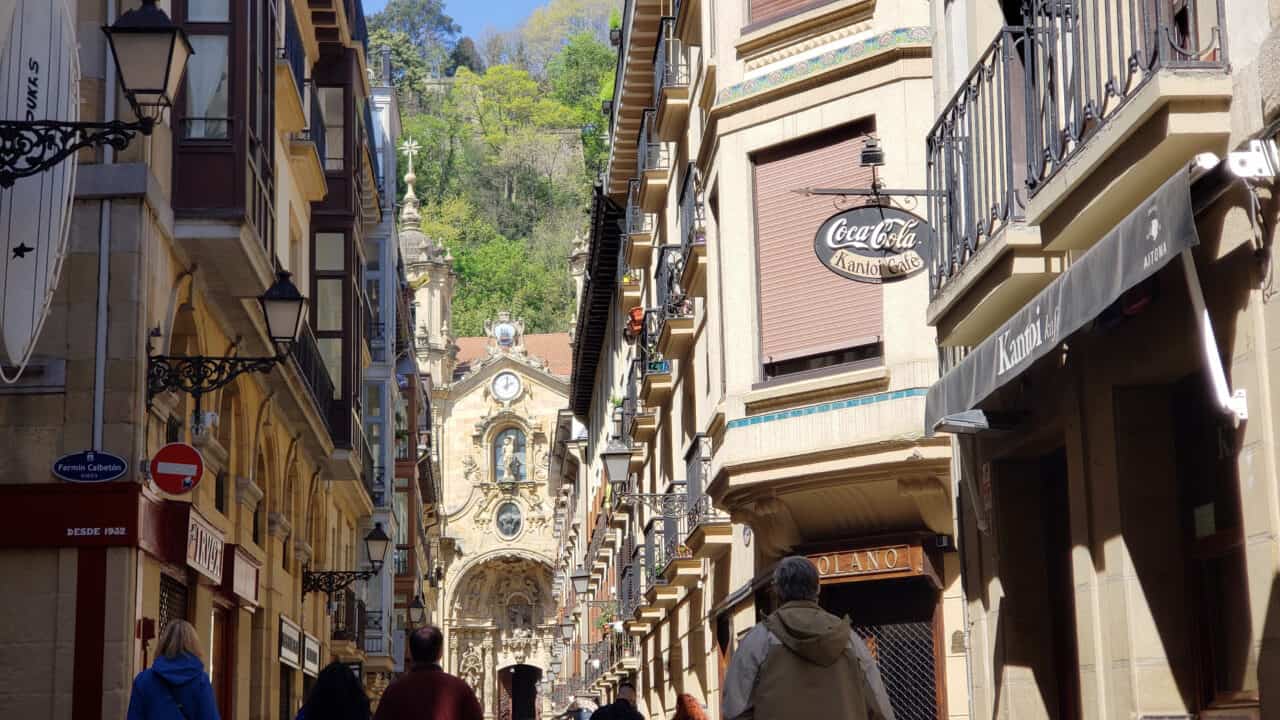
More than the architecture or even the great beaches, San Sebastián is known for its food at all ends of the spectrum. Apparently, with more than a dozen Michelin Star restaurants, it has one of the highest number of Michelin stars per square metre of any city. San Sebastián was named the “Best food destination in the World”. In addition to quality and variety, accessibility and affordability were measured. An interesting criteria used for affordability was the number of hours a person on minimum wage would have to work to afford a two-person dinner in a restaurant. The quality of the street food in addition to the quality of the high end restaurants is exceptional. The top 3 Best Food Destinations and their ratings were:
1 – San Sebastian 8.09
2 – Tokyo 7.98
3 – New York – 7.81
(….6 Paris – 7.54)
Toronto didn’t make the list.
Although Tapas come from Spain, San Sebastián originated “pintxos” which are Basque-style tapas. Mike and I quite enjoyed the pintxos. They are usually a small slice of French stick, topped with multiple items including everything from Spanish ham, prawns and anchovies to cheese, chorizo or wild mushroom croquettes. Some of the seafood ones were lovely, but Mike avoided those. They are usually speared with sticks to hold everything together. I read that in some bars, at the end of the night the sticks are counted to calculate your bill.
Here is some interesting trivia I read on the internet. Tapas, which were invented before pintxos, came about because people would place small pieces of bread on top of their drinks to stop flies and other insects getting in. The trend reached the Basque Country in the 1930s. Today that has evolved into the Basque pintxo. Most pintxos are served cold but some are heated for you.
In addition to food, our guide told us that the old town of San Sebastián has the highest concentration of bars in the world. This is with a population of only 186,000. San Sebastián gives George Street in St. John’s, Newfoundland a run for its money. George Street is known for having the most bars and pubs per square foot of any street in North America.
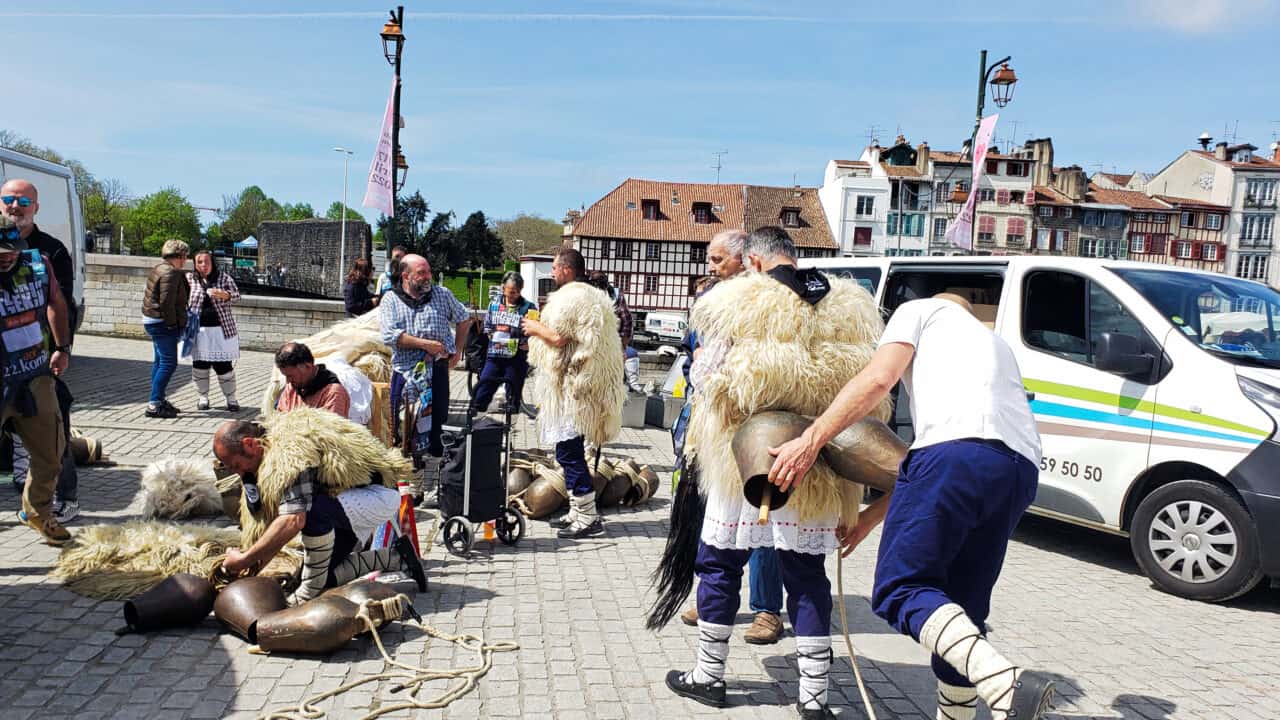
The city centre in San Sebastián had only one large flag – the Basque flag. On maps and signs San Sebastián is known as Donostia-San Sebastián. Donostia is the Basque name for the city. About 30% of the Basque population currently speak the Basque language. The language was a target for Spanish dictator General Franco, who enforced the use of Spanish and forbade Euskara (also called Basque) during his rule from 1939 to 1975.
I read about one woman who was heard speaking Euskara to her local food vendors. She was arrested and jailed. Her jailers shaved her head to humiliate her. As you can imagine, she didn’t pass the local language down to her children. Today, the Southern Basque Country within Spain enjoys an extensive cultural and political autonomy. The majority of schools under the jurisdiction of the Basque education system use Basque as the primary medium of teaching. However, the situation is more delicate in the Northern Basque Country within France, where Basque is not officially recognized, and where lack of autonomy and monolingual public schooling in French exert great pressure on the Basque language.
On our last day in the region Mike and I drove back to Bayonne, France. Luckily a Basque Festival was occurring in town that day. It is a festival dedicated to returning the Basque language to the people. It made me think of our Inuit population in Canada. They had a few musicians and passed around song sheets with the words in Basque and had a whole tent full of people singing away. A few of the songs had a distinct Oktoberfest flavour to them. The festival moved to a different city every day for 10 days. The grand finale was the next day in San Sebastián. Mike wasn’t up for delaying our departure to return to San Sebastián for a third time.
San Sebastián had a funicular that Mike and I didn’t get a chance to ride up. It also has a large hill that towers over the city centre called Mount Urgull. Our audio tour app IZI told us that it was not an arduous climb up this hill. We erred by starting our climb from a different spot than IZI was talking about and that was a big mistake. Part of the problem for me was all the stairs we encountered at different places on the hike uphill. I was just dreading returning down the stairs which is much worse for my knees than going up. Luckily at the top we found a little road for service vehicles which meant a longer walk but no stairs. At the top of Mount Urgull is a 12m or 39.4 foot high statue of Jesus dating back to the 12th century. One town nearby in Basque Country that we didn’t make it to was Pamplona, famous for the Running of the Bulls.
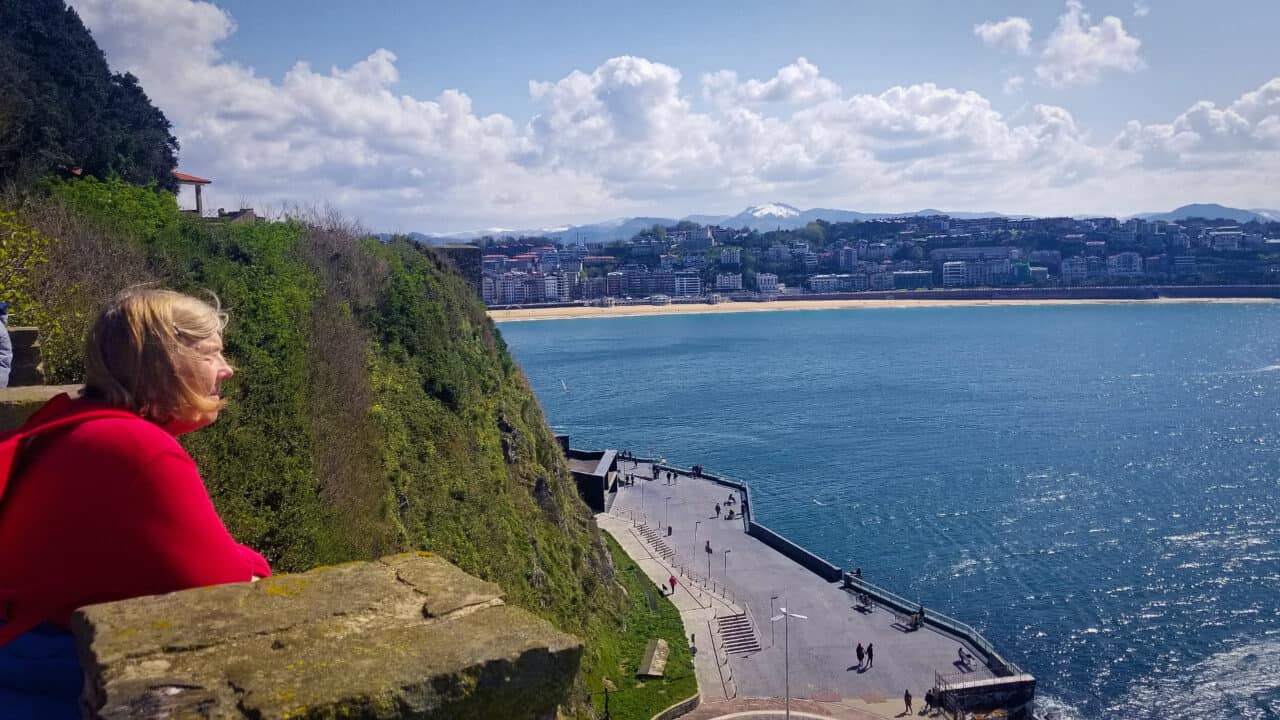
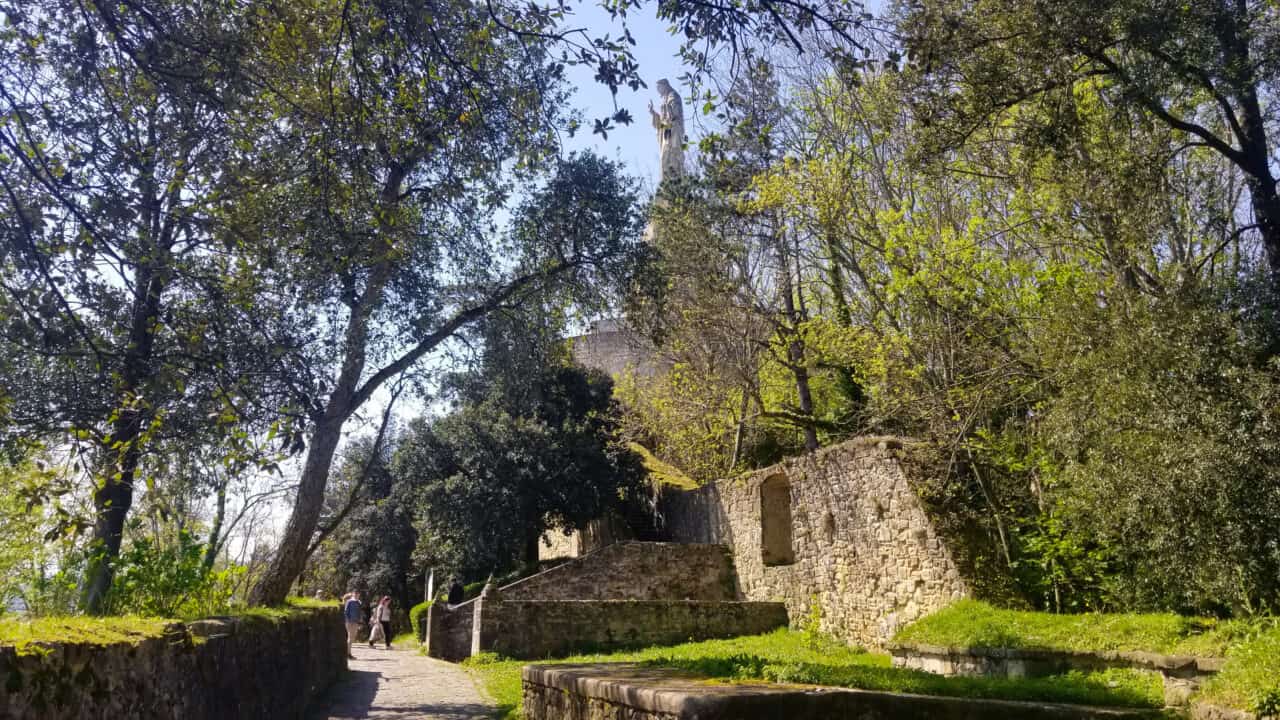
In addition to San Sebastián we continued touring French Basque Country. We visited a few more of the “Most Beautiful Villages” in France. The town of Sare has a population of about 2,600 people and somehow manages to have another very lovely church interior. In Bayonne we visited an Asian museum. Years ago, Mike and I picked different areas to visit in Asia quite often. We really liked that part of the world. This museum had taken the IZI software that Mike and I used for exploring San Sebastián and many other cities and put it to good use. They recorded write-ups about each exhibit area and you could play them back using the IZI app. They did a really good job of it although it certainly lengthened our visit. It was very interesting to see how many of the different types of objects we had had in our home before we downsized. From statues to carvings to large screens. It certainly brought back many memories.
We met a couple from the Netherlands and while we were discussing the coronavirus they told us that analyzing sewage water is commonplace and has been done for years in the Netherlands. They use this technique to detect many different substances ranging from plastics to drugs. Like many countries they are now also testing for Covid-19. Recently they have started this testing at all their water treatment plants instead of just a subset. They think they would have been able to react much quicker to the pandemic if they had expanded the sites where they were they testing sooner.
Google is giving us grief with its “helpfulness”. It automatically translates foreign languages into English which is usually quite good. One traveller showed us her website that has her name in large print on the home page. Her name is Dasja and Google changed it to Dasha on my PC which annoyed her no end. Google will translate city names and train stops that shouldn’t be translated. Trying to find a train station whose name is shown as the English translation is very difficult especially when you don’t know this has happened. It turns out that we actually have more language issues and mishaps in France than in other countries. This is largely because we can understand and speak a very little French but not enough, and we often try and use our own translations instead of using Google translate. Google translate does a much better job!
I am just finishing this article as we are turning into our next campground after spending 16 days in Basque country. We are arriving in the town of Tournay at the foot of the Pyrenees. We are looking forward to exploring the snow capped mountains we saw driving in here and visiting the local towns. After this we will get back on track and go to the campground in Toulouse that we expected to get to several weeks ago.
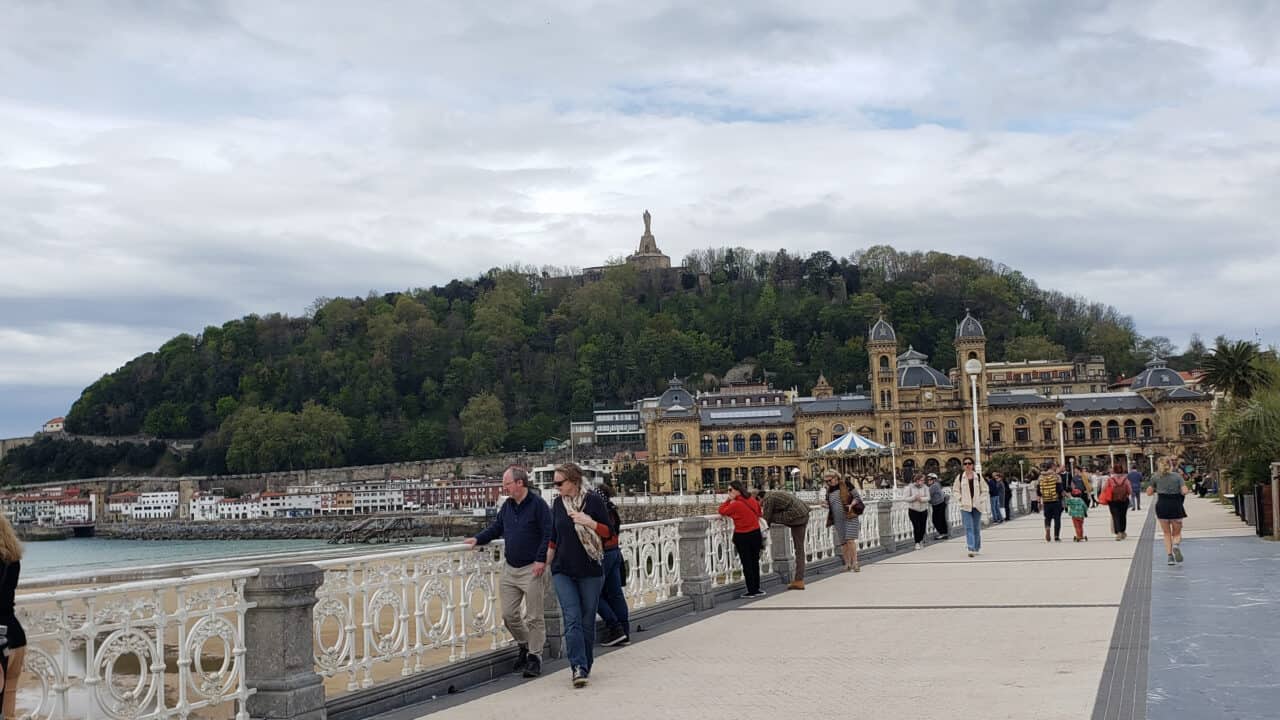

Leave a Reply